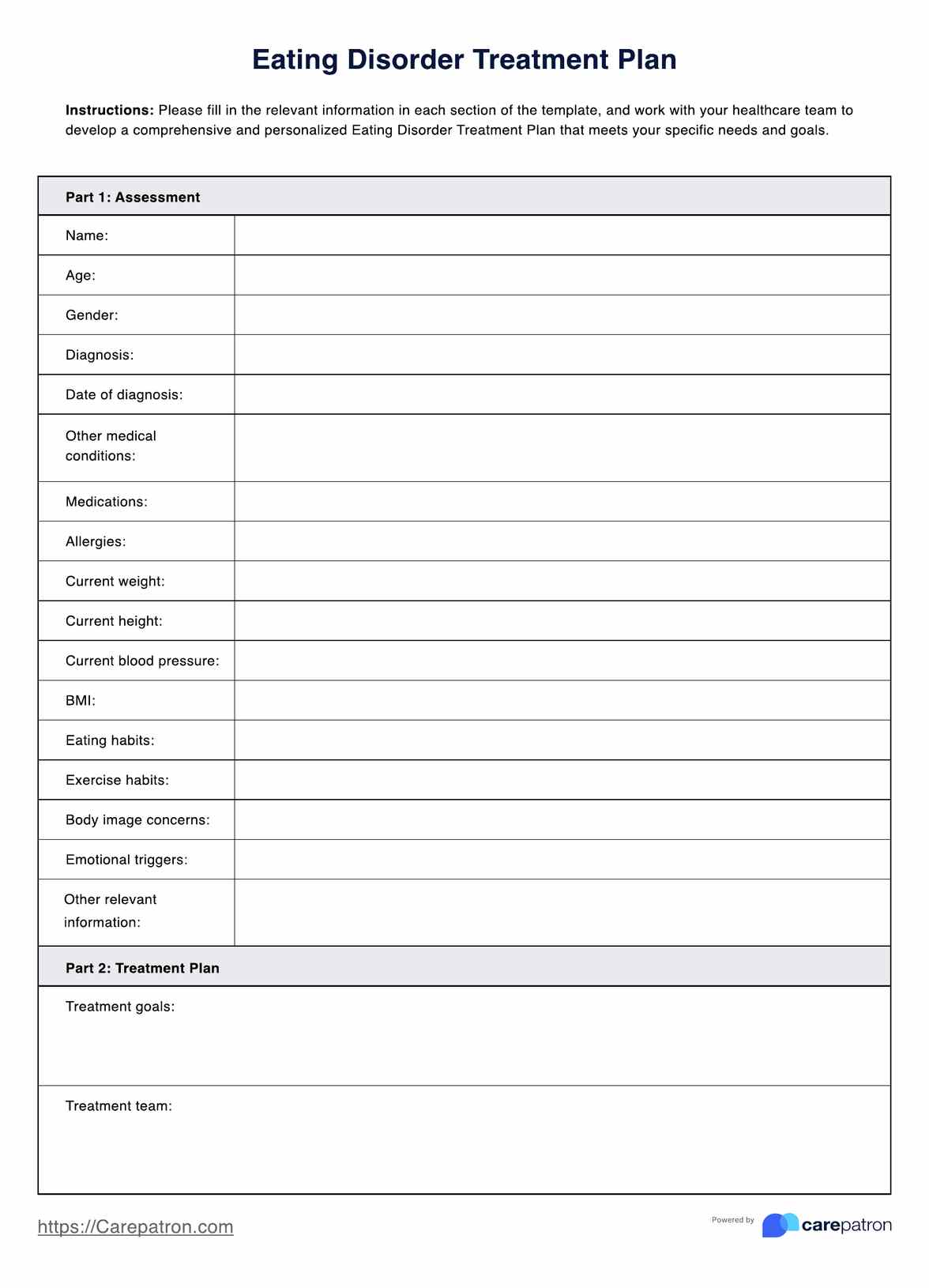Fill in your personal information and medical history in the assessment section. Determine treatment goals and interventions in collaboration with your healthcare team. Fill in the treatment goals, team, and interventions in the treatment plan section. As needed, evaluate and adjust the treatment plan.

Eating Disorder Treatment Plans
Get a free printable Eating Disorder Treatment Plan template. Learn more about why and how to use it.
Use Template
Eating Disorder Treatment Plans Template
Commonly asked questions
Eating Disorder Treatment Plans are beneficial because they provide a structured and personalized approach to treatment, aid in identifying and treating the disorder's root causes, and ensure that all aspects of the condition are addressed.
Individualizing an Eating Disorder Treatment Plan is important because each person's needs and goals are different, and a personalized plan is more likely to be effective in addressing those needs and achieving those goals.
EHR and practice management software
Get started for free
*No credit card required
Free
$0/usd
Unlimited clients
Telehealth
1GB of storage
Client portal text
Automated billing and online payments











